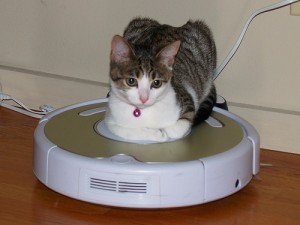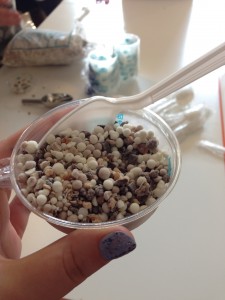I awoke this morning slightly before 5am, and I wasn’t even grumpy about it! “Really?”, you politely ask. Indeed. I awoke slightly before my alarm, bundled up, grabbed my purse, and departed on what might be my last New York adventure: The Quest for the Cronut.
For those of you who have been living under a rock, a cronut is a mysterious baked good invented by the Dominique Ansel Bakery – that is, as its name suggests, a cross between a croissant and a doughnut.
Cronuts are all the rage in New York: people line hours before the bakery’s 8am opening for a chance to buy a maximum of two cronuts (cronutae?). As a lover of a baked good, and something of a croissant aficionado, I knew it was something I had to do before I left New York. At worst, I thought, it’d be a good story. And it was with that mindset that I existed my apartment and set out.
The adventure started early: looking up the street, I noticed some small scurrying things on the sidewalk near the garbage – my first non-subway track New York rats! SUCH EXCITEMENT! I crossed the street, startling the gentleman walking along the road who I suspect was more accustomed to people crossing the street to avoid him, rather than joining him, and headed west toward Soho.
New York may be the city that never sleeps, but the Lower East Side was definitely sleeping at 5am. Mildly creeped out by the lack of humanity, I hopped a cab the rest of the way to the bakery. As I approached it, I saw a small crowd: the beginning of the line! One man had a sleeping bag (it was chilly), people had chairs, a nice guy offered to share his bench with me (which I gratefully accepted). The early liner-uppers were super friendly: people were obviously excited to sample the cronut wares, and were content to be waiting a few hours for sake of it.
A coworker who lived nearby joined me (with a couple of chairs), and we chatted the hours away as the sun rose and the line lengthened. It was really nice, and I love that they have a security guard who ensures that no one tries to butt into the line. About twenty minutes before the bakery opened, they came around with freshly-baked madeleines, and before I knew it, I was inside, ordering a cup of tea, a lovely ham and cheese croissant, and two cronuts. My coworker got two as well, and once everyone had arrived MongoDB’s docs team (the four of us who were in the office, at least) feasted.
The cronut was delicious: reminiscent of a packzi, but crispier and tastier. Would I line up for 2.5 hours for one again? Probably not – not unless a friend asked me to – but there’s something wonderful to be said for doing something ridiculous. I mean, getting up at 5am for a doughnut isn’t like going bungy jumping or something (though I like bungy jumping, so that’s not a great example), but the ritual aspects: getting up, bundling, walking or hailing a cab, chatting with your line-mates… it’s a great experience, and well worth the lost sleep.
It’s easy to say no to things: when I lived in New Zealand, I had an acquaintance who had lived there for 8 months but hadn’t done any of the touristy things “because [she] lived there, [she] wasn’t a tourist”. I lived there too, but I was going to museums and walking tours, and having awesome weekends seeing and doing. It’s easy to sleep, or hang out and work, or watch Netflix in bed when you’re in a new city. I’m glad that I’ve managed to combat the inertia, and I know that I’ve had a more exciting life than I otherwise would have. The cronut was super tasty, but the experiences are what stick with you… the experiences, and the butter…



